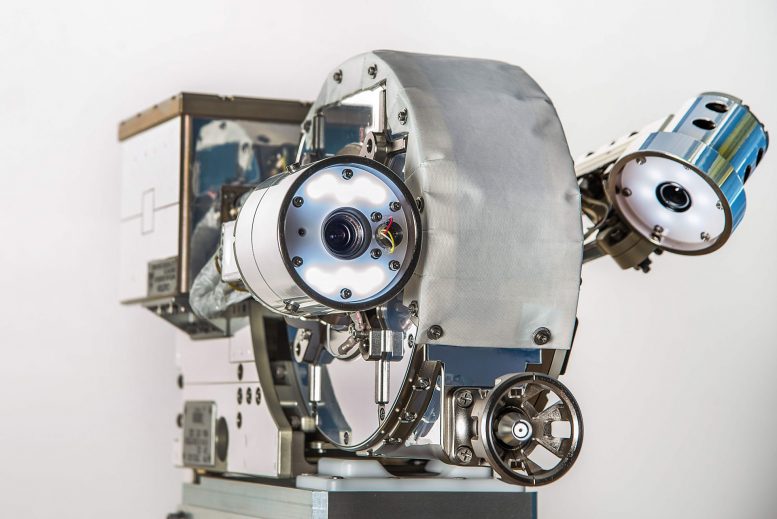NASA engineers are developing robotic spacecraft to help service and repair satellites in distant orbits.
NASA is developing and demonstrating technologies to service and repair satellites in distant orbits. Robotic spacecraft — likely operated with joysticks by technicians on the ground — would carry out the hands-on maneuvers, not human beings using robotic and other specialized tools, as was the case for spacecraft like the low-Earth-orbiting Hubble Space Telescope.
This photograph looks closely at one of the tools that could be used for satellite servicing in the future: the Visual Inspection Poseable Invertebrate Robot (VIPIR), a robotic, articulating borescope equipped with a second motorized, zoom-lens camera that would help mission operators who need robotic eyes to troubleshoot anomalies, investigate micrometeoroid strikes, and carry out teleoperated satellite-repair jobs. NASA successfully demonstrated VIPIR’s capabilities earlier this year.
VIPIR would be used in NASA’s Robotic Refueling Mission (RRM), now in the second phase of its on-orbit demonstration aboard the International Space Station. RRM is using the Canadian Space Agency’s two-armed robotic handyman, Dextre, to show how future robots could service and refuel satellites in space. During RRM’s third phase, the Satellite Servicing Capabilities Office team at NASA’s Goddard Space Flight Center plans to demonstrate the transfer of xenon, a colorless, dense noble gas potentially useful for powering ion engines.










To make the task of servicing aging satellites or spacecraft with drone robotic spacecraft engineered for that purpose easier, focusing on functional receptivity of the serviced technology would simplify it being done.
This would inclusively entail receptive fuel inputs that mechanically be designed with no other failproof option than couple with the refuel feed from the drone, or disengage the the job is done. Perhaps, when physical adjustment or alterations are in hand by robotic grip, having a service could be facilitated by making the machine operated on the centre of gravity. That would, on the one hand, entail techhnology that totally surrounds a craft, comparable to a relatively much lighter but larger version of the robotic Rubix Cube solver shown in the link below. On the other hand, it would be very easy to construct a very small servicing device that clamps onto a designated position of the technology serviced, that unscrews off or takes off the cover and then services the insides. The problem of dealing with an object with a centre of gravity in weightlessness would be dealt with either way or in combination.
Aided by having all the area dimensions of the serviced object pre-programmed into the servicing device, letting it know where everything is, would be simple programming, especially if satellites and spacecraft service were designed to be engaged in, in such a way. With costs of construction focused on the one off expenditure of the serviceable machine and bare bone servicing drones there would be savings all around the spectrum.
https://www.youtube.com/watch?v=_d0LfkIut2M
Is this a summary??